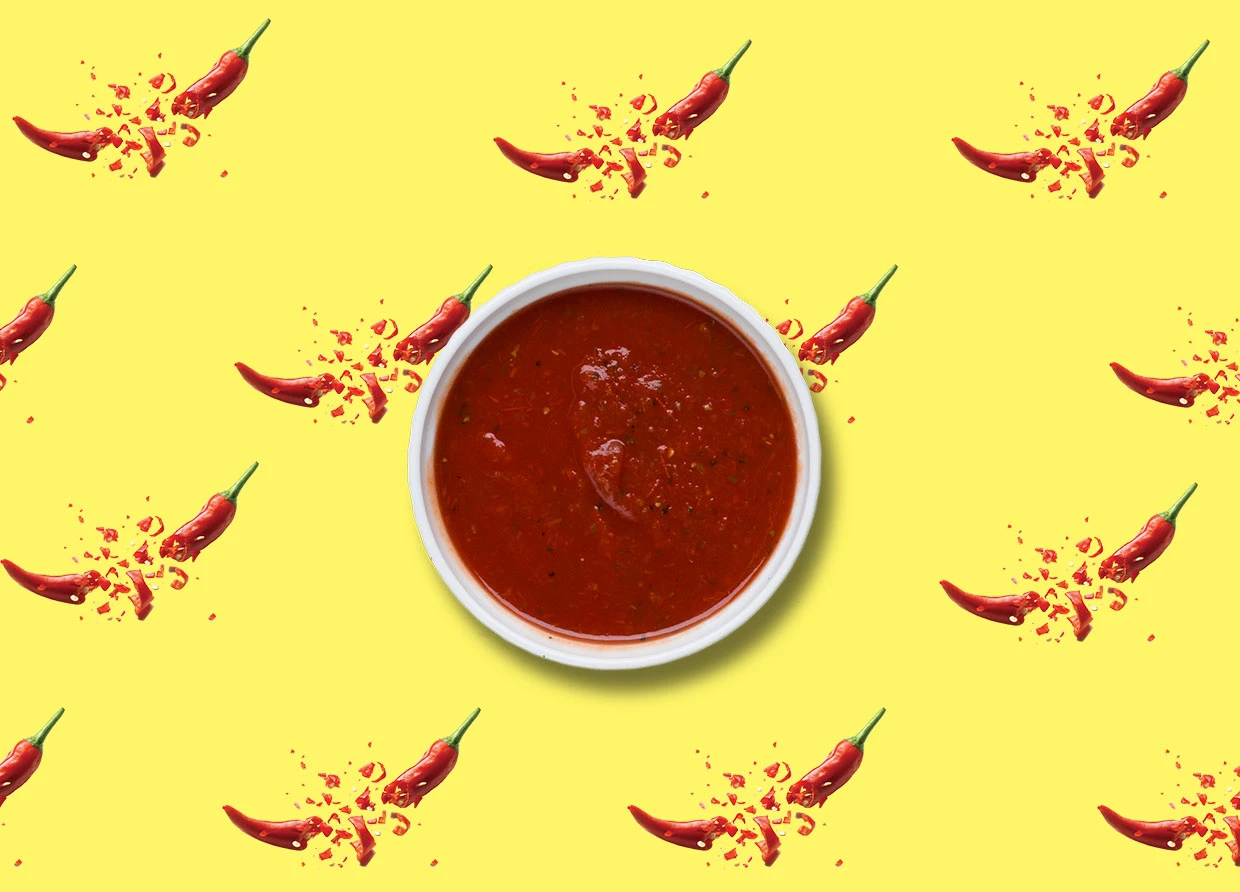SAMBAL: HOW IT CAME TO BE
How the staple condiment was born.

Sambal is widely regarded as a staple condiment in the Nusantara region, most notably in Indonesia, especially in the island of Java, where most variations of sambal are found.
However, sambal's main ingredient, the chili pepper of the genus Capsicum, did not originate from the region or anywhere near maritime Southeast Asia but rather from the Americas. It was introduced by the Portuguese and Spanish to the archipelago in the 16th century during the Columbian exchange.
The genus Capsicum was just among the many new world plants that were introduced to the old world by the exchange. Starting in the late 15th century, the event globalized maize, tomato, potato, vanilla, rubber tree, cacao, turkey, and several other commodities.

As we all know today, the chili pepper referred to as cabe or cabai in Nusantara is the most common hot spice agent used in sambal and other cuisines. However, the Capsicum is not the first hot spice agent, nor was it the first ingredient called cabai.
The most common variants used in sambal recipes are the Cayenne pepper, the common cabai, and the bird's eye chili pepper, the cabai rawit, both of which are varieties of Capsicum annum. Studies have concluded that sambal, a loanword of Javanese and Sundanese origin, had existed throughout maritime Southeast Asia as early as the 10th century. A hot spice agent called cabya was used as one of the region's main cooking spices, alongside ginger and andaliman.
The other most used varieties of chili used in making sambal include the adyuma or habanero, Madame Jeanette, and cabe Taliwang, which is similar in spiciness to the naga jolokia at over one million Scoville Heat Units. The chili paste or sauce known as sambal is usually served as a condiment for dishes including lalap (raw vegetables), ikan bakar (grilled fish), ikan goreng (fried fish), ayam goreng (fried chicken), ayam penyet (smashed chicken), iga penyet (smashed ribs) and various kinds of soup.
Nowadays, cabya refers to the Javanese long pepper or Balinese long pepper (Piper retrofractum), but researchers suggest that the plant, which belongs to a wholly different order from the Capsicum, was quickly replaced by the new world spice after its introduction. The plant is now considered rare and used mainly in traditional herbal medication and jamu. It belongs to the same order as pepper, introduced to the Nusantara in the 12th century through contact with Indian states.
Javanese manuscript Serat Centhini, partially written by Mangkunegoro of Surakarta and published in 1814, recorded sixteen sambal variants in Java, while recipe book Mustika Rasa, written and composed by Hartini Sukarno in the 60s, mentioned 63 recipes of sambals.
Indonesian researcher Murdijati Gardjito, however, identified hundreds of variants of sambals in Indonesia in 2017, with 212 of them having a clear origin, while 43 were of an unclear origin. In Indonesia, the island of Java holds the most variants of sambal at 43 percent, Sumatra has 20 percent, Bali and West Nusa Tenggara have 8 percent, while the rest are distributed between Maluku, Kalimantan, and Sulawesi.
Gardjito listed two main categories of sambal in Indonesia, namely cooked and uncooked, with the first being more popular in the western part of the country, while the latter is more popular in the east.

Below are the most popular variants of sambal:
1. Sambal terasi
This sambal is one of the most common variants of sambal in Indonesia. It is made with chili pepper (of course), fermented shrimp paste or terasi, and salt. Lime juice is often added to the recipe. The variant is popular both in Indonesia and the Netherlands among the Indonesian and Malay diaspora. There exists in Malaysia a less tangy version of the variant known as sambel belacan.
2. Sambal balado
Sambal balado is found mostly in Minangkabau cuisine. It is made with either chili pepper or green chili pepper, blended together with garlic, shallot, red or green tomato, salt and lemon or lime juice, then sauteed with oil. It is an essential element of many Minangkabau recipes, such as telor balado, terong balado, and udang balado.
3. Sambal goang
Sambal goang is one of the more simple variants of sambal, yet it is known for its extreme hotness. This Sundanese delicacy is made with sauteed cayenne pepper, garlic, salt and galangal.
4. Sambal leunca
Sambal leunca is another variant of sambal originating from the land of the Sundanese. It belongs to the uncooked sambal group and is made with red chili pepper, bird's eye chili pepper, shallot, shrimp paste, and leunca berries.
5. Sambal stroberi
Sambal stroberi is a modern invention supposedly originating from West Java. It is most popular in the district of Ciwidey of the neighboring Bandung Regency. As the name implies, it is a variety of sambal made with strawberries.
#THE S MEDIA #Media Milenial #Sambal #Indonesian cuisine



























